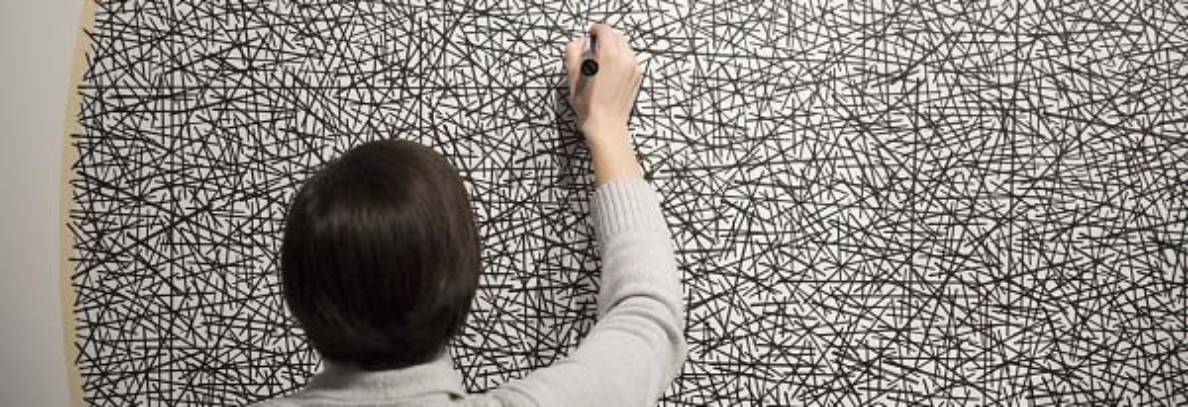Artist Buttons
For my artist buttons, I chose to do a take on the gentrification of Little Jamaica and the appropriation of Jamaican Patois in Toronto. Over the past couple of years, the “Toronto Accent” has become very popularized, especially on social media. Other countries have even made fun of the accent and the ‘slang’. Although Little Jamaica has been labelled a Cultural Community, there are no descriptions for what that means, and the neighbourhood continues to suffer from gentrification, construction, and post-COVID impacts. ‘ur a jerk’ is a button surrounded by the names of streets that make up Little Jamaica. ‘ur a jerk’ is also a play on words for jerk seasoning. ‘yah nuh kno patwa’ means ‘you don’t know patois’ with a photo of Jackie Mittoo, who introduced reggae and ska to Canada from Kingston, Jamaica. A photo of a record shop worker in the 70s with the words ‘love the culture, take the culture, make it your own’. Almost all the record shops in Little Jamaica have been shut down and even with the Cultural Community label there is little to no chance of shut down businesses coming back. ‘Wagwan Gentrifier’ is designed like a business tag. The man in the photo owns one of the oldest and only tailor shops in Little Jamaica. The Sunday Cleaner is a newspaper in Kingston, Jamaica, showing how in 1985 Ottawa banned restaurants and distributors from calling Jamaican beef patties, ‘patties’ and said they had to be referred to as ‘pies’ or you would be fined up to $5000. The reason for this is that, at the time, a beef patty was for a hamburger, which is why today we have to specify that they are Jamaican patties. For the last button, a picture of Randy’s beef patty shop in Little Jamaica. It opened in 1975 and was originally in the Ward, the first multicultural community in Ontario. The community was started by free Black people and those who escaped slavery in the South, and later Chinese immigrants as well. The shop took a hard hit from the Metrolinx being built and COVID. It was announced it would be shut down permanently in February 2022, and Drake offered to buy it but the deal never happened.
This community has suffered so much and yet Torontonians have taken this culture and language without fighting to save it for those that introduced them to it. My Mother and Grandmother took comfort in this community when immigrating to Canada, as many immigrant communities do. Toronto is one of the most diverse cities in the world, cultural communities should not be suffering to this extent.



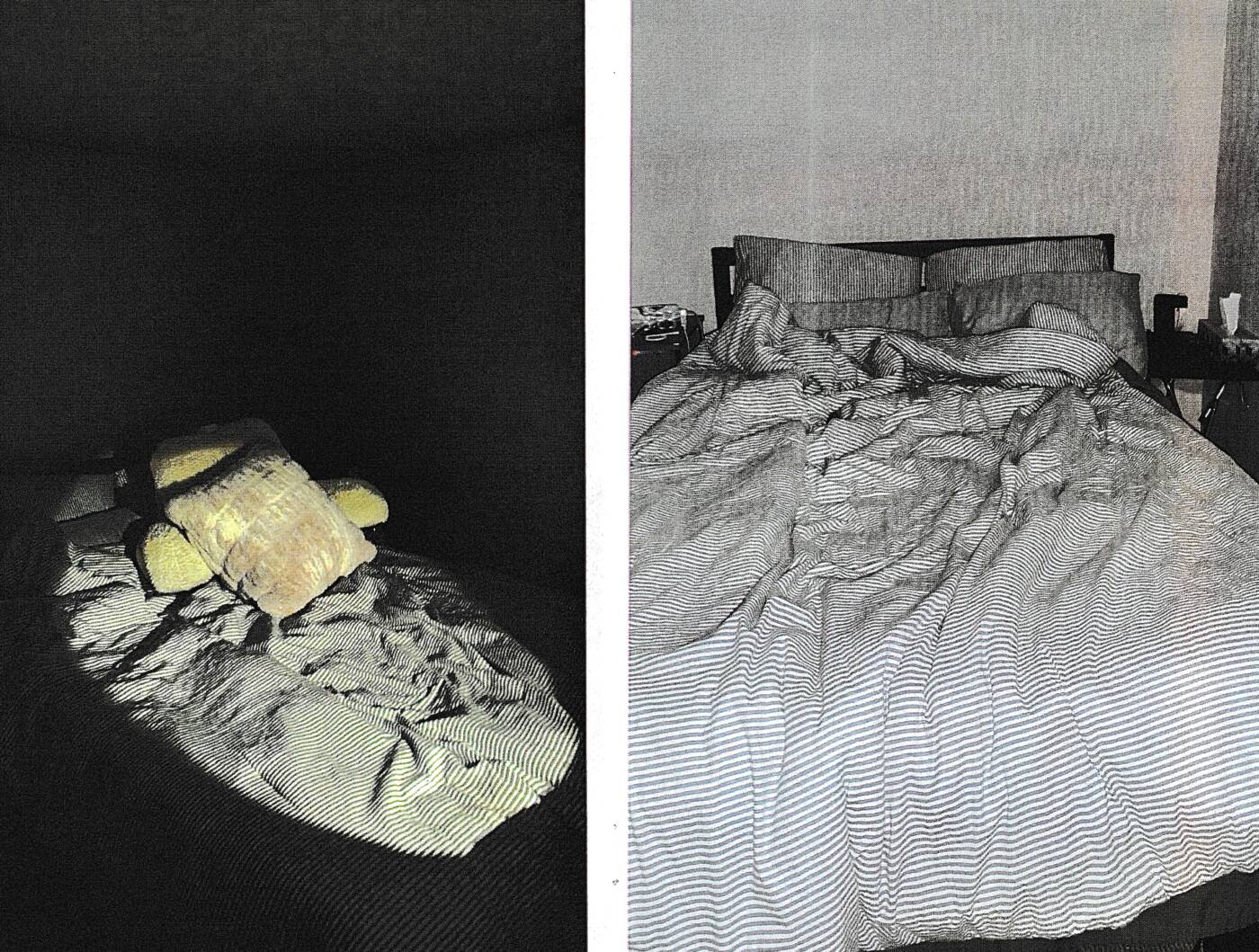



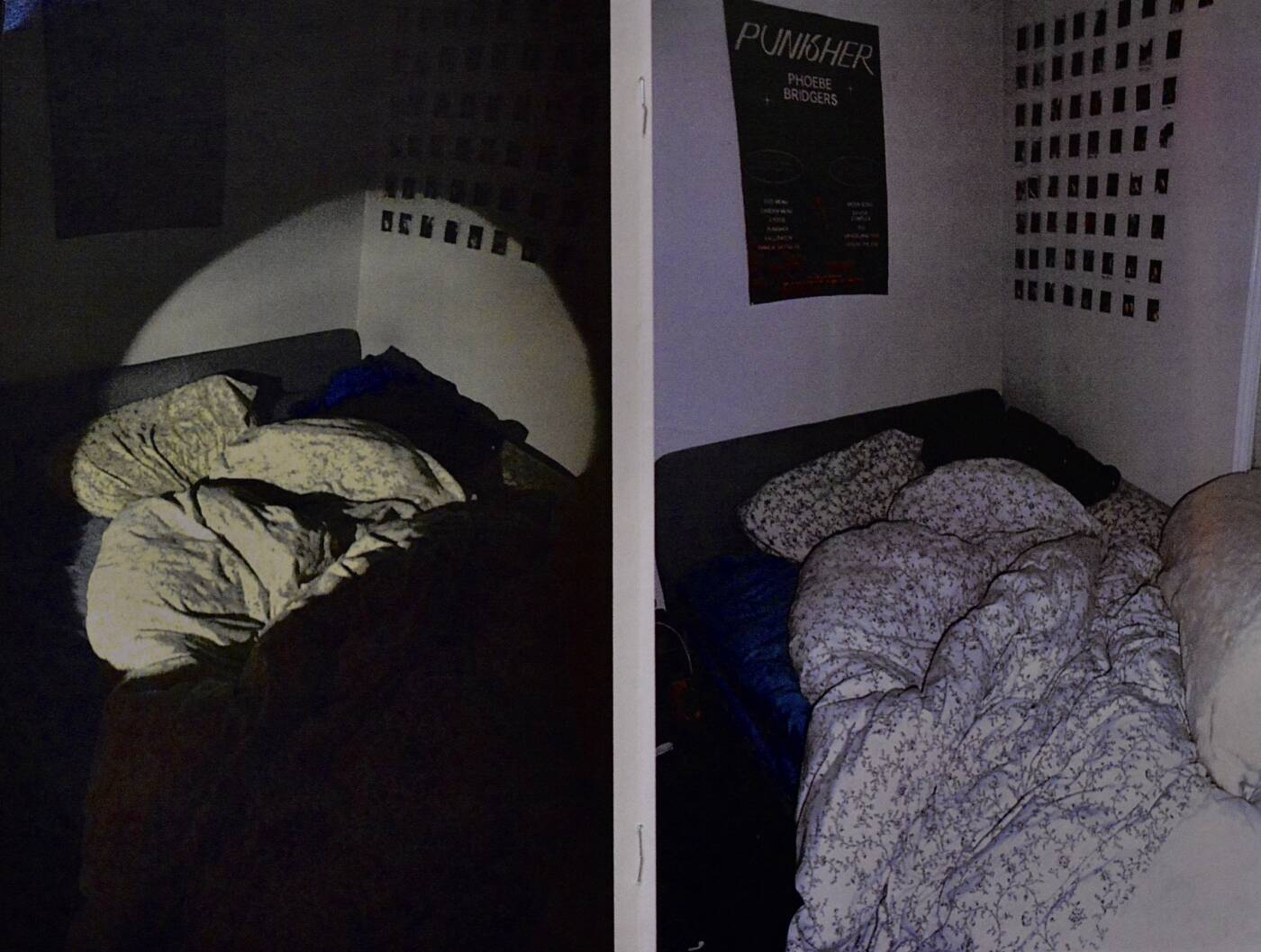
‘Sanctuary: twenty-year-old girl edition’
The vision behind this project was how our beds are reflections of us as people. We spend a large chunk of our lives in bed, and it’s the place where we feel the most comfortable, mentally and physically. For this project, I was only able to access the rooms of women between the ages of twenty and twenty-one, however, I see it as a documentation of how our lives look and how they may change if this project is continued in the future, or how it can be compared to different ages and genders.
Your bed is a sanctuary; it feels safe and warm… that’s not always how they look to others. I wanted to take a very “harsh reality” type photo and then one that emits the light at the end of the tunnel. When opening the door at the end of the day, it’s as if your bed is on a pedestal, angels crying out.
Audio Art
“Chasing Childhood”
I wanted to find a way to articulate how I want my future to be. When describing it, I find it difficult to communicate the feeling that comes with it as well. For this assignment, I decided I wanted sound to paint a picture. I combined the sounds of a marsh, with birds and crickets, chipmunks. Then, cars driving on a wet road outside and listening to people laugh in the other room while doing dishes in the kitchen. Curling up by the fire with a cat, listening to my neighbour’s wind chimes. Going to concerts. People singing Happy Birthday because I have only had three parties in my life and only one has been on my actual birthday. The sounds of kids playing, not because I want kids, but because I picture a future surrounded by my friends whose children call me their aunt. Finally, a bike bell, that I imagine riding through a park, during a storm because it’s my favourite weather, saying hello to people I know. I can see all the images that accompany these sounds. It brings me great comfort to think about a simple life like this.
Video Art
Sage McKenna and Ana Sofia Silva Elizondo
For our video art assignment, we wanted to express some ways people physically deal with anxiety. Many of us deal with these feelings in similar ways, the videos themselves are even meant to radiate this through the screen. The “void” we are stuck in with our thoughts and feelings is represented through the black background; so you are focused only on the action.
‘Clutch’ represents grasping for comfort where you can find it. Digging at your own hand thoughtlessly because it helps to ease the mind. The length of the video makes the viewer more and more uncomfortable watching the desperation in the movements. How long will it go on for?
‘Restraint’ is a video anyone with a phone can relate to. We have prioritized human connection through our devices and need the affirmation that someone is reaching out to us. We feel the need to be informed at all times with huge influxes of information being thrown from every direction. Our phones are how we don’t feel left behind. The title is ironic; there is no restraint. What if in the last 8 seconds, I got an important message and missed it? Only one notification pops up on the screen that stays mostly black until someone taps it, hoping for something new. Anxiety comes from this access to everything at once.
The close-ups of these actions are meant to immerse the viewer into the mind of a person dealing with a lot of noise in their heads. The discomfort is there to put people in this person’s shoes without the distraction of a face, or sometimes even a body.
Pipilotti Rist

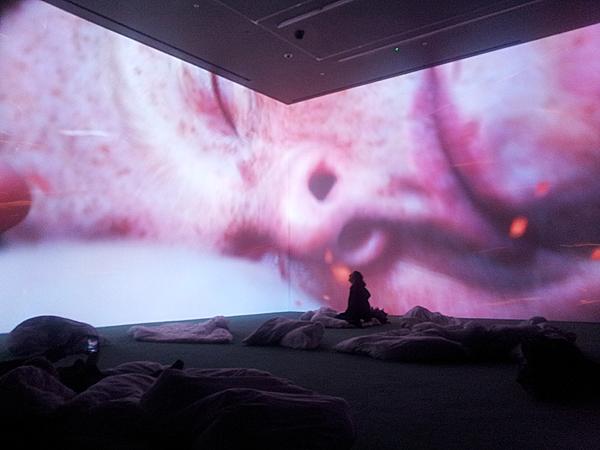
‘Worry Will Vanish’ (2014) by Pipilotti Rist shows a blend of highly detailed videos of people, nature and other objects that might be difficult to depict at first glance. Described as a “journey inside the human body, based on a three-dimensional animation”.The colours are incredibly vibrant and it is easy to feel a sense of nostalgia and peace while watching, which is Rist’s exact intention. There are points in the video where trees are overlapping with the inside of a vein and strips of wavy light and bubbles with such high contrast that it feels psychedelic. There are extreme close-ups of hands that bring both extreme comfort and discomfort simultaneously. She pans up different body parts and plants, editing in layers from different videos, all while a very strange acoustic guitar accompanied by odd chirping and electronic sounds, high-pitched ringing and jingling that is quite overstimulating, but compliments the piece. It is installed by being projected on the walls (and ceiling in some cases); viewers are invited to take off their shoes and lie down on big cushions to gain the full experience. Without the sound, I could easily watch this video for hours happily. Having the scale be so big and experiencing it in a “slumber party” type way heightens the work because you are completely encapsulated in it.

Rist’s work is certainly something I might witness on YouTube or TikTok. People are very creative nowadays and I have seen artists and content creators do similar things, especially to ‘Be Nice to Me’ where they break the fourth wall. However, in regards to the actual messages Rist has, there might be some obscure things that a person could certainly find if they dug deep enough. The thing about her is that she is able to confront viewers directly and successfully, which I find a lot of people online are unable to do since trends and attention spans are so fleeting. A lot of artists now also seem to stray away from vibrant colour in videos and Rist uses high contrast to compliment her message, whereas critics see it as ‘too cheery’.
During the inside-out experiment I found that my own self-consciousness is what really made the difference. I had some friends from class point out my shirt, which was very nice, and it definitely took some weight off my chest telling them it was for class. Yet, stepping out of class and realizing that if they noticed, so did everyone else, made me attempt to shrink myself down. Originally, I wanted to walk around confidently, as if I had no clue something was off, but in the end, I couldn’t bring myself to. I couldn’t tell everyone around me that I knew my shirt was on wrong, but I also had to remind myself that no one cared. I wore a shirt that wasn’t obviously inside-out unless you looked at the hemming, so there really wasn’t much to be embarrassed about, but it was interesting how something so slight could change my day. I would say that it was a performance because there was intention behind it I was looking for reactions from people.
Make a Kilometre
For my kilometre, I wanted to show a kilometre of sound. Every sound has a frequency that can be calculated at a specific distance (distance= speed/frequency). So, the distance of sound for this note (F) is 345(speed of sound) divided by 345Hz. Meaning, 345m per sec./345Hz = 1m of sound. Unfortunately, due to my own background noise feedback from the room I was in, my video goes to 346 Hz, but the F note is 345 Hz. I then played the note at 2x speed 1000 times. If we add this together, we would get (345/345)x1000 = 1000m or 1km.
The editing software I used distorted the audio, apologies. The original sound is also linked.
Marina Abramovic
When first viewing Abramovic’s work I was incredibly intrigued, even though her performances were described as self-inflicted violence and “provocativeness”. In most performance pieces that include these same themes, I see it as someone looking for shock value, yet in this aspect, I never felt as if that was what Marina was going for. There were instances where people described her work as a shared human experience at Marina’s own risk. The way she chooses to perform her art, possibly because she is the “mother of performance art”, there isn’t any emotional disconnect from the audience, which seems to be her main goal. It was obvious from the beginning that every individual performance was equally important to her both artistically and emotionally.
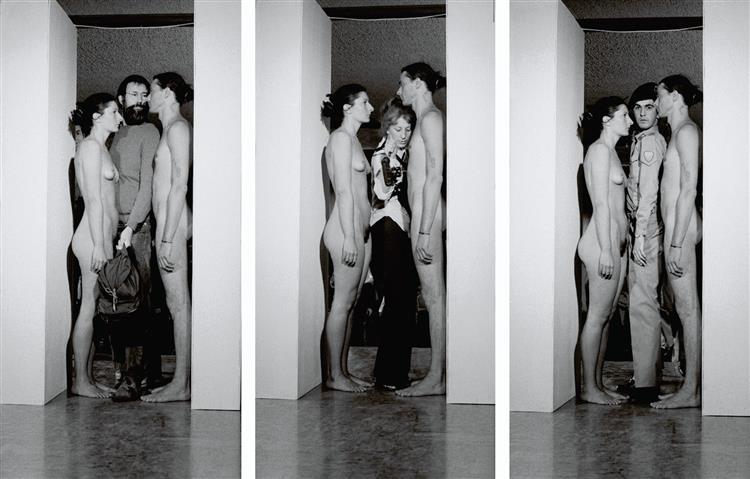
This performance piece was the most recurring in the documentary and as odd and uncomfortable as it seems at first, you cannot deny that every person interacting with it is okay doing so. However, I think the relationship between the performers and the audience is both admirable and problematic thing about it. The audience member must choose who to face and are doing so at the risk of the performer. There is, unfortunately, a very big possibility that an audience member will take it too far and act inappropriately towards a performer. Even though this would be predicted and the performers understand going into it, there is a question as to whether or not putting another person in that position is worth it for the sake of the art. When it is Marina, she is, at least, putting herself in that position. We saw multiple times how people entered the space and “broke the rules” in front of Marina herself, I can’t imagine if people tried to pull something similar, or worse, with the other performers. The performance puts everyone involved in a vulnerable position.
Something Marina’s art has shown me about performance art is how physically demanding it is. She, and the other performers, take on a very challenging role for her art and do so while fasting. There was also Marina putting herself through an excruciating amount of pain and was doing so as a way to almost take that pain away from her audience or show them how she can relate. Her absolute willingness to put herself in an agonizing position because she wants people to know that she cares and isn’t acting. She is described as always performing and saying that when you open the door to pain you enter another state of mind, showing her dedication and resilience.
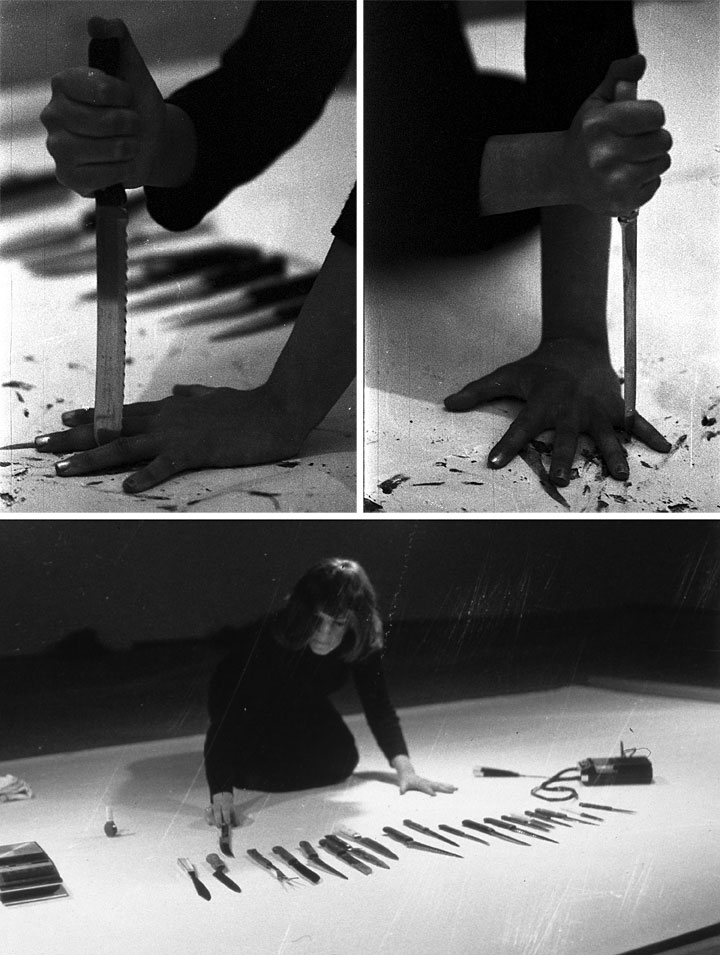

I think the reason performance art resists many museums is both because of its non-traditional nature and the space it takes up, but also the way that people interact with art generally. Performance art, for Marina, should not just be viewed but interacted with. I think the reason she can find some sort of loophole is because she lets her audience know that she treats everyone equally and is seeking out individual connections. They want to participate; it isn’t something they just want to see, and in some cases, she almost forces them to participate but not in a way that they aren’t willing to do so. She is bringing everyone out of their comfort zone and leaving them with something they will cherish for the rest of their lives because of the respect they are shown.
